-
 Bitcoin
Bitcoin $85,236.8618
0.90% -
 Ethereum
Ethereum $1,615.9773
1.41% -
 Tether USDt
Tether USDt $0.9996
-0.02% -
 XRP
XRP $2.0883
0.66% -
 BNB
BNB $591.2394
-0.31% -
 Solana
Solana $138.7789
3.57% -
 USDC
USDC $0.9997
-0.02% -
 Dogecoin
Dogecoin $0.1571
-0.57% -
 TRON
TRON $0.2426
0.82% -
 Cardano
Cardano $0.6304
0.44% -
 UNUS SED LEO
UNUS SED LEO $9.3083
0.85% -
 Chainlink
Chainlink $12.9679
2.88% -
 Avalanche
Avalanche $20.2445
5.87% -
 Stellar
Stellar $0.2481
3.09% -
 Toncoin
Toncoin $2.9678
-0.99% -
 Shiba Inu
Shiba Inu $0.0...01230
0.25% -
 Hedera
Hedera $0.1667
0.48% -
 Sui
Sui $2.1626
1.33% -
 Bitcoin Cash
Bitcoin Cash $334.6897
-2.24% -
 Hyperliquid
Hyperliquid $18.0279
6.84% -
 Polkadot
Polkadot $3.8084
3.15% -
 Litecoin
Litecoin $76.0021
-0.32% -
 Bitget Token
Bitget Token $4.5255
2.93% -
 Dai
Dai $0.9999
-0.01% -
 Ethena USDe
Ethena USDe $0.9992
-0.02% -
 Pi
Pi $0.6488
4.29% -
 Monero
Monero $211.1432
-2.44% -
 Uniswap
Uniswap $5.3268
2.64% -
 Pepe
Pepe $0.0...07424
2.66% -
 OKB
OKB $50.9311
0.82%
What is the Fractal protocol on a blockchain?
Fractal protocol enhances blockchain scalability and efficiency by using a fractal structure for parallel transaction processing across multiple layers.
Apr 12, 2025 at 11:56 am
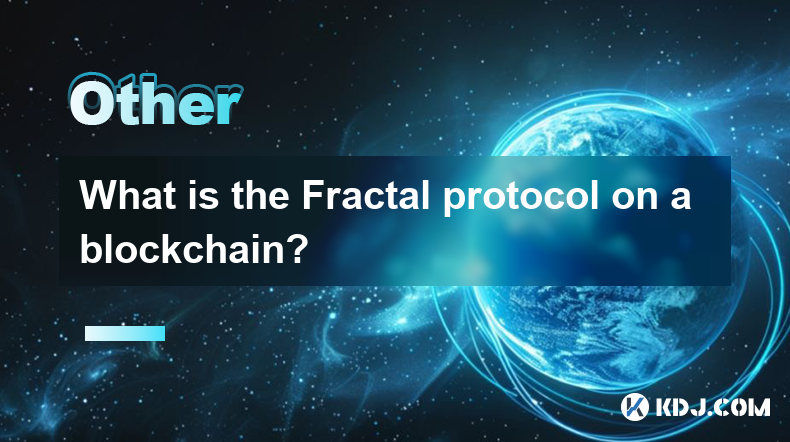
The Fractal protocol on a blockchain represents an innovative approach to enhancing the scalability and efficiency of blockchain networks. Fractal protocol is designed to address some of the inherent limitations of traditional blockchain systems, such as slow transaction processing times and high fees. By implementing a fractal structure, this protocol aims to create a more dynamic and adaptable network that can handle a higher volume of transactions without compromising on security or decentralization.
Understanding the Basics of Fractal Protocol
At its core, the Fractal protocol leverages the concept of fractals, which are geometric shapes that can be split into parts, each of which is a reduced-scale copy of the whole. In the context of blockchain, this means that the network can be divided into smaller, self-similar units that operate independently but are interconnected. This structure allows for parallel processing of transactions, significantly increasing the throughput of the network.
The Fractal protocol operates by creating multiple layers within the blockchain. Each layer can process transactions independently, and the results are then aggregated and verified across the network. This multi-layered approach not only speeds up transaction processing but also enhances the overall resilience of the network, as the failure of one layer does not affect the others.
How Fractal Protocol Enhances Scalability
One of the primary benefits of the Fractal protocol is its ability to enhance the scalability of blockchain networks. Traditional blockchains often struggle with scalability due to their linear structure, where each transaction must be processed sequentially. In contrast, the Fractal protocol allows for the simultaneous processing of transactions across multiple layers, effectively multiplying the network's capacity.
For instance, if a blockchain using the Fractal protocol has five layers, each layer can process transactions independently. This means that the network can handle up to five times the number of transactions per second compared to a single-layer blockchain. This scalability is crucial for applications that require high transaction volumes, such as decentralized finance (DeFi) platforms and large-scale enterprise solutions.
Security and Decentralization in Fractal Protocol
While scalability is a significant advantage, the Fractal protocol also maintains a high level of security and decentralization. Each layer within the fractal structure is secured by its own set of validators, ensuring that no single point of failure exists. Additionally, the interconnected nature of the layers allows for cross-verification of transactions, further enhancing security.
Decentralization is preserved through the distribution of control across the various layers. Each layer operates autonomously but is part of the larger network, ensuring that no single entity can dominate the system. This decentralized approach aligns with the core principles of blockchain technology, making the Fractal protocol an attractive option for those seeking to build secure and scalable decentralized applications.
Implementation of Fractal Protocol in Existing Blockchains
Integrating the Fractal protocol into existing blockchain networks involves several steps. Developers must first assess the current architecture of the blockchain to identify areas where the fractal structure can be implemented. This typically involves modifying the consensus mechanism and transaction processing logic to accommodate the multi-layered approach.
- Assess the current blockchain architecture: Understand the existing structure and identify potential bottlenecks.
- Modify the consensus mechanism: Adapt the consensus algorithm to support the fractal structure, ensuring that each layer can operate independently while maintaining overall network integrity.
- Implement the fractal layers: Develop the necessary code to create and manage the multiple layers within the blockchain.
- Test and validate: Rigorously test the new fractal structure to ensure it meets performance and security standards.
- Deploy and monitor: Roll out the updated blockchain and continuously monitor its performance to make any necessary adjustments.
Use Cases for Fractal Protocol
The Fractal protocol has a wide range of potential applications within the cryptocurrency ecosystem. One of the most promising use cases is in the field of decentralized finance (DeFi). DeFi platforms often require high transaction throughput to support complex financial operations, and the Fractal protocol can significantly enhance their performance.
Another potential application is in supply chain management. Blockchain-based supply chain solutions can benefit from the scalability and efficiency offered by the Fractal protocol, enabling faster and more reliable tracking of goods and materials across global networks.
Additionally, gaming and digital collectibles can leverage the Fractal protocol to handle the high volume of transactions associated with in-game purchases and the trading of non-fungible tokens (NFTs). By improving transaction speeds and reducing fees, the Fractal protocol can enhance the user experience in these applications.
Challenges and Considerations
While the Fractal protocol offers numerous benefits, it also presents certain challenges and considerations. One of the main challenges is the complexity of implementing and maintaining a fractal structure within a blockchain. Developers must have a deep understanding of both blockchain technology and fractal geometry to successfully integrate the protocol.
Another consideration is the potential for increased resource requirements. The multi-layered approach of the Fractal protocol may require more computational power and storage capacity compared to traditional blockchains. This could impact the accessibility of the network, particularly for users with limited resources.
Finally, the Fractal protocol must be carefully designed to prevent potential vulnerabilities that could arise from the interconnected nature of the layers. Ensuring the security and integrity of the network is paramount, and developers must implement robust safeguards to protect against attacks and failures.
Frequently Asked Questions
Q: Can the Fractal protocol be integrated with any existing blockchain?
A: While the Fractal protocol can be integrated with many existing blockchains, the feasibility depends on the specific architecture and consensus mechanism of the blockchain. Some blockchains may require significant modifications to support the fractal structure, while others may be more compatible out of the box.
Q: How does the Fractal protocol impact transaction fees?
A: The Fractal protocol can potentially reduce transaction fees by increasing the throughput of the network. With more transactions being processed simultaneously, the demand for block space decreases, which can lead to lower fees. However, the actual impact on fees will depend on various factors, including network congestion and the specific implementation of the protocol.
Q: Are there any existing blockchains that have implemented the Fractal protocol?
A: As of now, there are no widely known blockchains that have fully implemented the Fractal protocol. However, several projects and research initiatives are exploring the potential of fractal structures in blockchain technology, and it is possible that we will see practical implementations in the future.
Q: How does the Fractal protocol handle network congestion?
A: The Fractal protocol addresses network congestion by distributing transactions across multiple layers, allowing for parallel processing. This means that even during periods of high demand, the network can continue to process transactions efficiently, reducing the likelihood of congestion and delays.
Disclaimer:info@kdj.com
The information provided is not trading advice. kdj.com does not assume any responsibility for any investments made based on the information provided in this article. Cryptocurrencies are highly volatile and it is highly recommended that you invest with caution after thorough research!
If you believe that the content used on this website infringes your copyright, please contact us immediately (info@kdj.com) and we will delete it promptly.
- The Crypto Market Is Heating Up Again—and It's Not Just Bitcoin or Ethereum This Time
- 2025-04-20 05:35:12
- After years of regulation-by-enforcement, the SEC is now open to public input on crypto policy
- 2025-04-20 05:35:12
- Bitcoin (BTC) Prices Hold Steady Near $83,200 as Thousands Protest Against Trump
- 2025-04-20 05:30:12
- While the Crypto Market Oscillates Without a Clear Direction, Some Internal Dynamics Are Reigniting Tensions
- 2025-04-20 05:30:12
- XploraDEX Presale Enters Its Final 48 Hours, with the Energy Electric Across the XRP Community
- 2025-04-20 05:25:12
- Justin Sun Hints at TRX ETF on SEC Website, Sparking Crypto Community Excitement
- 2025-04-20 05:25:12
Related knowledge
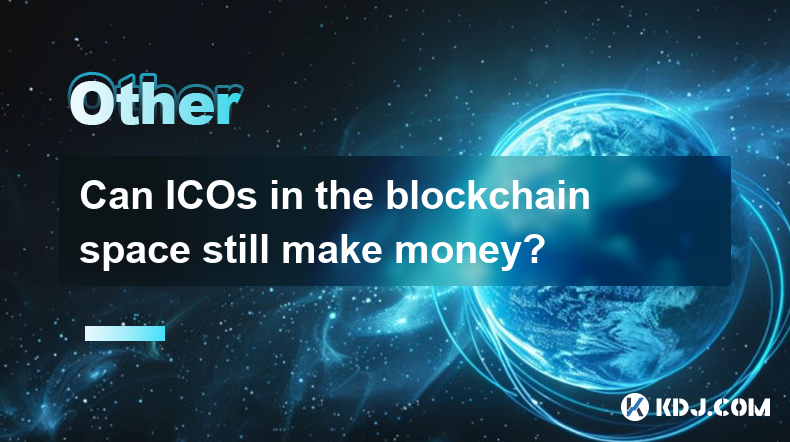
Can ICOs in the blockchain space still make money?
Apr 17,2025 at 08:29pm
The landscape of Initial Coin Offerings (ICOs) in the blockchain space has evolved significantly since their peak in 2017 and 2018. Despite the increased regulatory scrutiny and the rise of alternative fundraising methods like Security Token Offerings (STOs) and Initial Exchange Offerings (IEOs), ICOs can still be a viable way to raise funds and generat...

Can the application of blockchain in supply chain finance bring benefits?
Apr 15,2025 at 04:00pm
Can the application of blockchain in supply chain finance bring benefits? The integration of blockchain technology into supply chain finance has garnered significant attention in the cryptocurrency and financial sectors. This article explores how blockchain can potentially revolutionize supply chain finance, detailing its benefits and providing a compre...
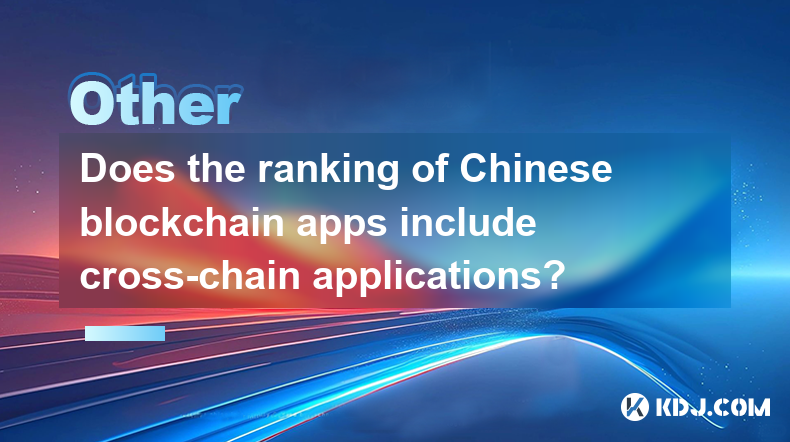
Does the ranking of Chinese blockchain apps include cross-chain applications?
Apr 14,2025 at 04:00pm
The ranking of Chinese blockchain apps is a comprehensive evaluation that takes into account various aspects such as user base, transaction volume, and technological innovation. A pertinent question arises regarding whether these rankings include cross-chain applications. Cross-chain applications, which allow different blockchain networks to interact an...
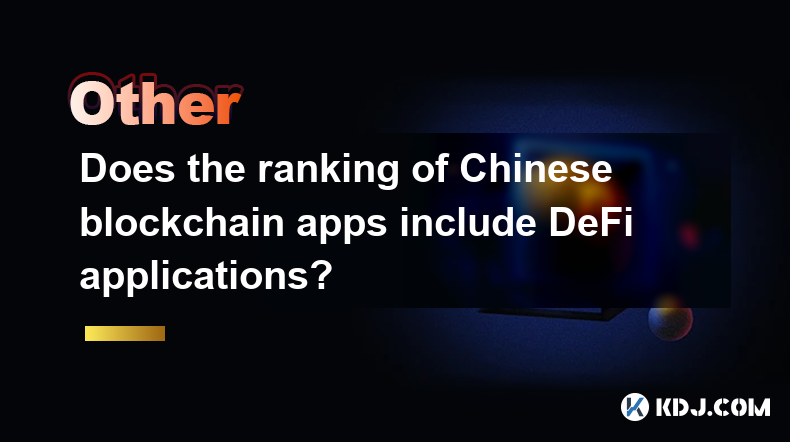
Does the ranking of Chinese blockchain apps include DeFi applications?
Apr 15,2025 at 06:57am
The ranking of Chinese blockchain apps is a comprehensive list that showcases the most popular and influential applications within the cryptocurrency ecosystem. One question that often arises is whether these rankings include DeFi applications. To answer this, we need to delve into the specifics of how these rankings are compiled and what types of appli...
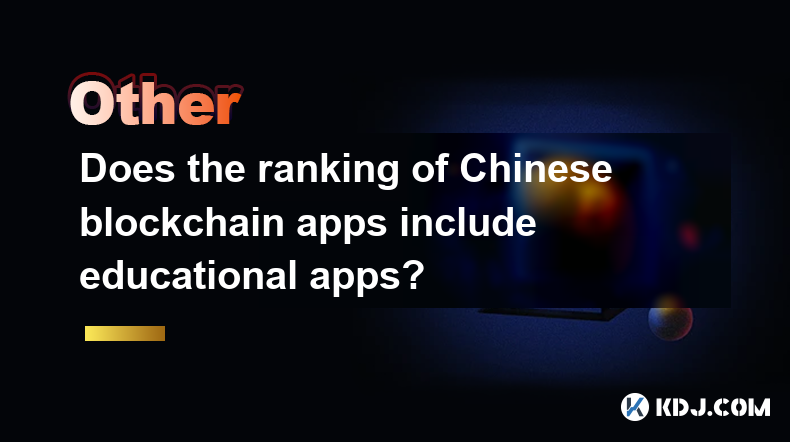
Does the ranking of Chinese blockchain apps include educational apps?
Apr 16,2025 at 03:35am
The ranking of Chinese blockchain apps often includes a variety of categories, from finance and gaming to social networking and beyond. One question that frequently arises is whether these rankings include educational apps. To address this, we need to delve into the specifics of how blockchain apps are categorized and ranked in China, and whether educat...
Does the ranking of Chinese blockchain apps include enterprise-level applications?
Apr 15,2025 at 06:42am
The ranking of Chinese blockchain apps often includes a variety of applications, ranging from consumer-focused to enterprise-level solutions. Understanding the scope and criteria for these rankings is essential to determine if enterprise-level applications are included. This article delves into the specifics of how Chinese blockchain app rankings are co...

Can ICOs in the blockchain space still make money?
Apr 17,2025 at 08:29pm
The landscape of Initial Coin Offerings (ICOs) in the blockchain space has evolved significantly since their peak in 2017 and 2018. Despite the increased regulatory scrutiny and the rise of alternative fundraising methods like Security Token Offerings (STOs) and Initial Exchange Offerings (IEOs), ICOs can still be a viable way to raise funds and generat...

Can the application of blockchain in supply chain finance bring benefits?
Apr 15,2025 at 04:00pm
Can the application of blockchain in supply chain finance bring benefits? The integration of blockchain technology into supply chain finance has garnered significant attention in the cryptocurrency and financial sectors. This article explores how blockchain can potentially revolutionize supply chain finance, detailing its benefits and providing a compre...

Does the ranking of Chinese blockchain apps include cross-chain applications?
Apr 14,2025 at 04:00pm
The ranking of Chinese blockchain apps is a comprehensive evaluation that takes into account various aspects such as user base, transaction volume, and technological innovation. A pertinent question arises regarding whether these rankings include cross-chain applications. Cross-chain applications, which allow different blockchain networks to interact an...

Does the ranking of Chinese blockchain apps include DeFi applications?
Apr 15,2025 at 06:57am
The ranking of Chinese blockchain apps is a comprehensive list that showcases the most popular and influential applications within the cryptocurrency ecosystem. One question that often arises is whether these rankings include DeFi applications. To answer this, we need to delve into the specifics of how these rankings are compiled and what types of appli...

Does the ranking of Chinese blockchain apps include educational apps?
Apr 16,2025 at 03:35am
The ranking of Chinese blockchain apps often includes a variety of categories, from finance and gaming to social networking and beyond. One question that frequently arises is whether these rankings include educational apps. To address this, we need to delve into the specifics of how blockchain apps are categorized and ranked in China, and whether educat...

Does the ranking of Chinese blockchain apps include enterprise-level applications?
Apr 15,2025 at 06:42am
The ranking of Chinese blockchain apps often includes a variety of applications, ranging from consumer-focused to enterprise-level solutions. Understanding the scope and criteria for these rankings is essential to determine if enterprise-level applications are included. This article delves into the specifics of how Chinese blockchain app rankings are co...
See all articles























































































